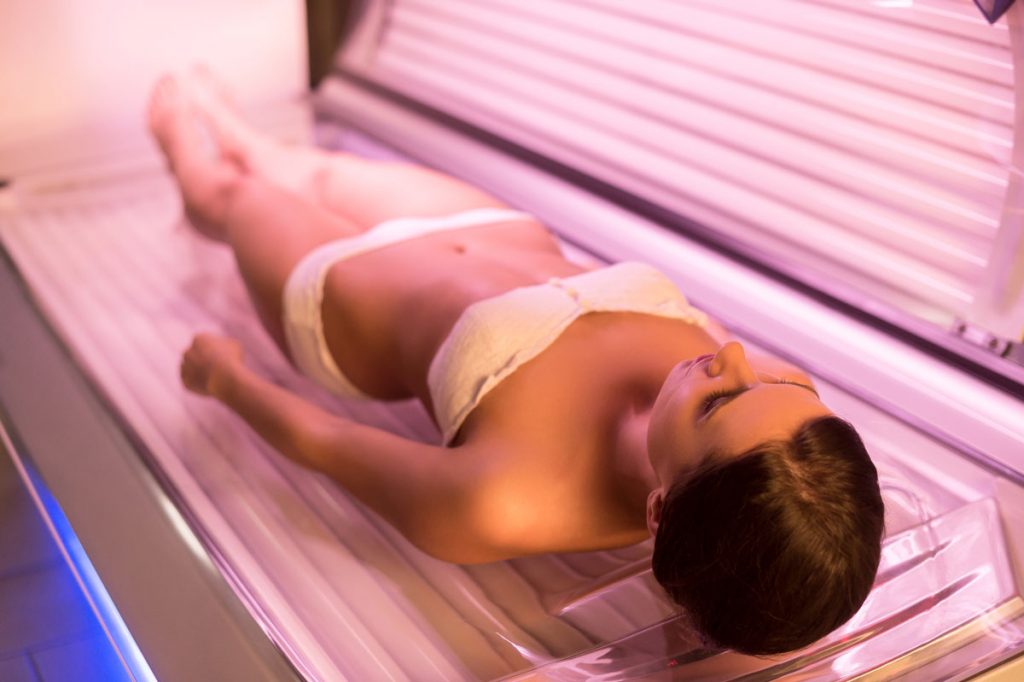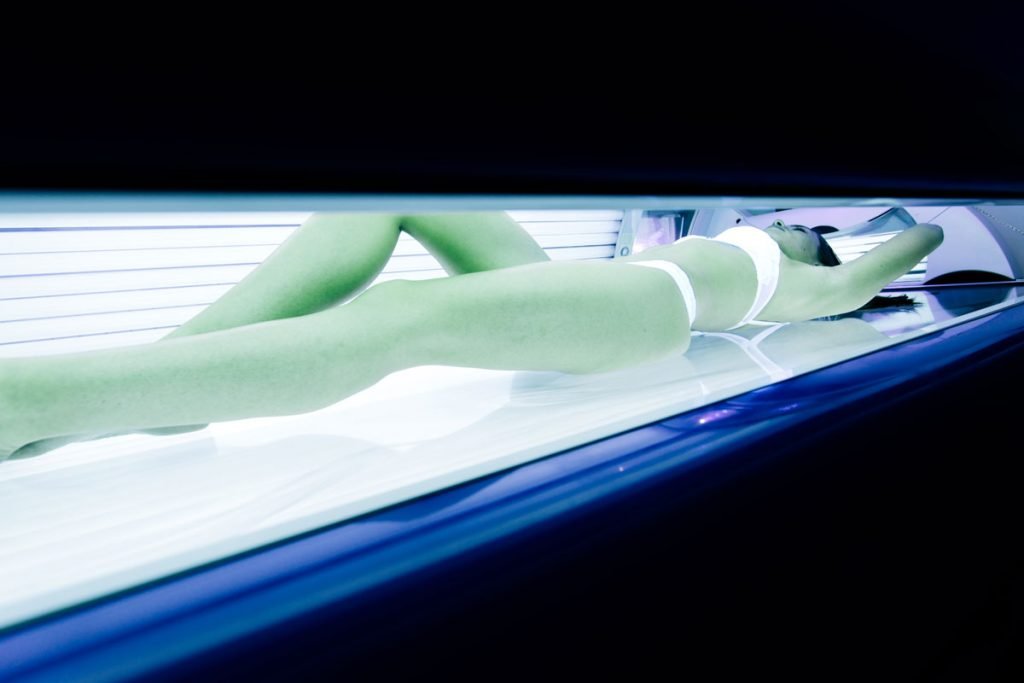
If you’re thinking about purchasing a tanning bed or own one already, it’s important for you to know how to use and operate it safely. Here, we’ll share our top safety tips, so you can make a better-informed decision.
These are our top five tanning bed safety tips:
- Keep your tanning sessions short and infrequent.
- Never tan before the age of 35.
- Wear proper eye protection.
- Cover sensitive areas.
- Avoid makeup and fragrance.
Let’s dive a little deeper.
1. Keep Your Tanning Sessions Short and Infrequent
Depending on the types of bulbs your tanning bed is equipped with, it can output much more damaging UVA light than natural sunlight. According to UnityPoint Health, tanning beds can emit up to 12 times more UVA radiation than sunlight. This means that a short amount of time spent in a tanning bed can be the equivalent of a much longer time spent in the sun.
With this in mind, be sure to keep your tanning bed sessions short. Also, remember that UV damage is cumulative, meaning that you shouldn’t use a tanning bed too frequently. Try using a tan extender lotion to help maintain your tan so you can go longer between sessions.
2. Never Tan Before the Age of 35
According to research from the International Agency for Research on Cancer, people who start using tanning beds before the age of 35 have a 75 percent higher chance of melanoma, the deadliest form of skin cancer. Women are at particularly high risk: A study published by the American Medical Association revealed that women who use tanning beds before the age of 30 are six times more likely to develop melanoma.
So, please refrain from using a tanning bed before the age of at least 35, and ensure that any friends or loved ones under that age cannot access your home tanning bed.
3. Wear Proper Eye Protection
It’s vitally important that you wear proper eye protection whenever using a tanning bed. After all, a study published by the American Medical Association found that eye injuries accounted for nearly six percent of indoor tanning-related emergency hospital visits over a nine-year period.
Make sure to purchase goggles specifically designed for use in a tanning bed and store them in a place where you’ll be sure to see them before hopping into the tanning bed.
4. Cover Sensitive Areas
Your eyes aren’t the only part of your body that need extra protection during an indoor tanning session: Your lips’ protective outer layer of skin is much thinner than it is on almost any other area of your body. Plus, paler areas of your body — like those which would normally be covered by a bathing suit — are more susceptible to burning than darker areas.
Additionally, while not as thin as the skin on your lips, the skin on your face and chest is thinner than the skin on the rest of your body, and should be protected as such. Some people prefer to wear sunscreen on their face and chest, while others like to leave theirs exposed for just a couple minutes before covering up with a UV-blocking towel (not a regular towel).
The lesson here is to always use either sunscreen or a physical covering to protect delicate areas of skin, including your lips, face, chest and paler areas.

5. Avoid Makeup and Fragrance
Although your cosmetic products and fragrances may be harmless outside of the tanning bed, they can react to high heat levels in ways that might produce unwanted results. For example, a thick layer of makeup might cause an uneven tan, while perfume or deodorant might cause skin irritation after a few minutes in your tanning bed.
To prevent those possible side effects, refrain from wearing makeup, deodorant or scented products when tanning.
While tanning beds should never be considered completely safe, these five tips can help you avoid unnecessary dangers while achieving a glowing tan.
To find a tanning bed that’s right for you and your home, take a look at Tanning Bed Depot’s line of home tanning beds.






